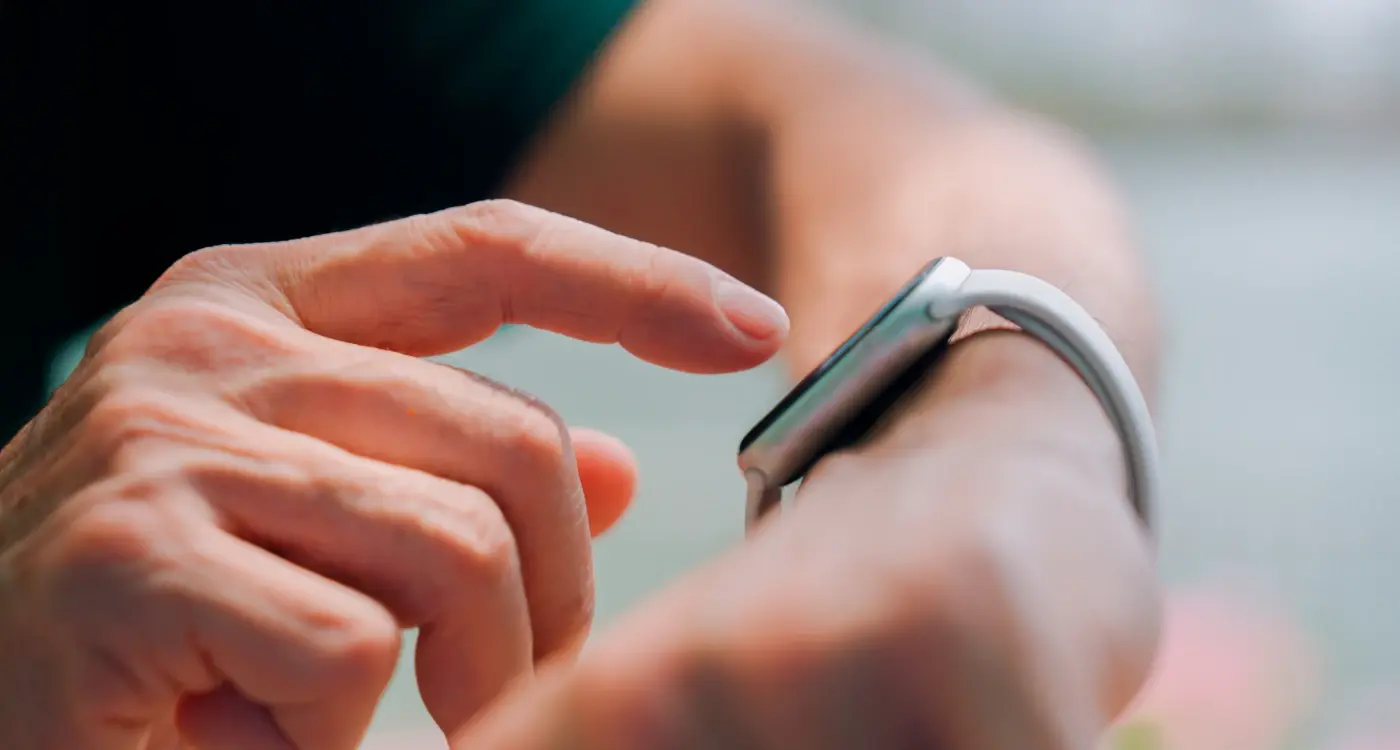What's The Difference Between AR And VR For Mobile Apps?
The mobile app world has changed dramatically since I started working in this field—and one of the biggest shifts has been the rise of AR and VR technologies. Augmented reality and virtual reality have moved from being science fiction concepts to real features that millions of people use every day on their phones. Whether you're catching Pokémon in your local park or trying on virtual sunglasses before buying them online, these technologies are becoming part of our daily lives.
But here's the thing that catches many people off guard: AR and VR are completely different beasts when it comes to mobile app development. I've had countless conversations with clients who think they want one when they actually need the other. They'll come to me saying they want a "VR app" when what they're describing is clearly augmented reality—or vice versa. It's not their fault; the terms get thrown around so much that the lines have become blurred.
Understanding the difference between AR and VR isn't just about getting the terminology right—it's about choosing the right technology for your users and your business goals
The truth is, both augmented reality and virtual reality offer incredible opportunities for mobile apps, but they solve different problems and create different experiences. Getting this choice right from the start can mean the difference between an app that delights users and one that confuses them. So let's break down what each technology actually does and when you should use them.
What is Virtual Reality?
Virtual Reality—or VR as most people call it—is a technology that creates a completely digital world around you. When you put on a VR headset, you're transported into a computer-generated environment that feels real even though it's not. You can look around, move about, and interact with things that only exist in the digital space.
Think of VR as stepping into a video game or film. The headset covers your eyes and shows you a 3D world, whilst headphones block out real-world sounds and replace them with sounds from the virtual environment. Some VR systems also have controllers that let you pick up objects, point at things, or wave your hands around in the digital space.
How VR Creates This Digital World
VR works by tricking your brain into believing you're somewhere else. The headset shows slightly different images to each eye—just like how your eyes see things differently in real life. This creates depth and makes everything look 3D. Motion sensors track where you're looking and moving, so when you turn your head, the virtual world moves with you.
What Makes VR Different
The key thing about VR is that it replaces your real surroundings completely. You can't see your actual room or the people around you. The main components of VR include:
- A headset that covers your eyes completely
- Speakers or headphones for 3D sound
- Motion tracking sensors
- Hand controllers for interaction
- Powerful processors to create realistic graphics
What is Augmented Reality?
Augmented reality—or AR as most people call it—is when we add digital things to the real world around us. Think of it like putting a computer screen on top of what you can already see, but the computer bits blend in with everything else. When you hold up your phone and see a dinosaur walking around your living room, that's AR in action.
The clever part is that AR doesn't replace what you're looking at; it just adds extra bits on top. Your kitchen table is still there, but now there might be a virtual cake sitting on it that only you can see through your phone screen. The technology uses your phone's camera to look at the real world, then works out where to place the digital objects so they look like they belong there.
AR works best when your phone can recognise flat surfaces like tables, floors, or walls—this helps it know where to place virtual objects so they look realistic.
What Makes AR Different?
AR is brilliant because it doesn't shut out the real world like virtual reality does. You can still see your surroundings, talk to people, and move around normally. The digital bits just tag along for the ride. Most AR mobile apps use your phone's camera, motion sensors, and some pretty smart software to make this magic happen.
- Uses your phone's camera to see the real world
- Adds digital objects that appear to exist in your space
- Lets you interact with both real and virtual things
- Works without any special headsets or equipment
Key Differences Between AR and VR
Right, let's get straight to the point—AR and VR are completely different beasts when it comes to mobile app development. The biggest difference? VR takes you away from the real world entirely whilst AR adds digital stuff to what you can already see around you. Think of it like this: VR is like putting on a blindfold and stepping into a completely new place, but AR is more like wearing special glasses that show you extra information about the room you're already in.
The technical side is where things get interesting. VR apps need much more processing power because they're creating entire 3D worlds from scratch—your phone has to work really hard to make everything look realistic. AR apps are clever in a different way; they use your phone's camera to see the real world, then overlay digital images on top. This means AR can run on most modern phones without making them overheat, whilst VR often needs special headsets or really powerful devices.
User Experience and Hardware
From a user's perspective, VR is all about isolation and immersion—you're completely cut off from your surroundings. AR keeps you connected to the real world, which makes it much safer and more practical for everyday use. You can walk around, talk to people, and still interact with the digital content.
For mobile apps, this creates very different opportunities and challenges that developers need to think about carefully. The rise of these technologies has been among the most significant mobile app development trends in recent years.
How AR Works in Mobile Apps
Right, let's get into the technical bits—but don't worry, I'll keep it simple! Augmented reality in mobile apps works by using your phone's camera and sensors to understand what's around you. Your phone's camera acts like digital eyes, constantly looking at the real world and sending that information to the app.
The magic happens when the app's software analyses what the camera sees. It looks for flat surfaces like tables or floors, or sometimes specific objects or images. Once it finds these anchor points, it can place digital objects on top of them. Your phone's gyroscope and accelerometer help track how you're moving and tilting your device, so the digital objects stay in the right place as you move around.
The Technical Process
Most AR mobile apps follow a simple process: detect, track, and render. First, they detect surfaces or markers in your environment. Then they track your movement so the digital content stays locked in place. Finally, they render—or draw—the digital objects onto your screen, making them appear as if they're really there.
Modern smartphones have become incredibly powerful computers that can process complex AR calculations in real-time without breaking a sweat
What's brilliant is that all this happens in real-time, dozens of times per second. Your phone is constantly updating the digital objects' positions as you move, creating that seamless blend of real and digital worlds that makes AR so compelling.
How VR Works in Mobile Apps
Getting VR to work on a mobile phone is quite different from the high-end VR headsets you might have seen in gaming shops. Your phone becomes the screen and the brain of the operation—you slip it into a VR headset (like Google Cardboard or Samsung Gear VR) and suddenly you're transported into a virtual world.
The magic happens through your phone's built-in sensors. The gyroscope and accelerometer track how you move your head, whilst the app renders two slightly different images on your screen—one for each eye. This creates the 3D effect that makes everything feel real and three-dimensional.
The Technical Bits That Matter
Mobile VR apps need to maintain a high frame rate (at least 60 frames per second) to prevent motion sickness. The graphics have to be simpler than what you'd see on a PlayStation or Xbox because your phone's processor isn't as powerful. Most mobile VR experiences use 360-degree videos or relatively simple 3D environments to keep things running smoothly.
The positioning tracking is more limited too—you can look around in all directions, but you can't walk around a room like you would with expensive VR systems. Your phone simply doesn't have the external sensors needed for that level of tracking. But for many VR experiences, this head-tracking alone is enough to create something genuinely immersive and engaging.
Popular Examples of AR and VR Mobile Apps
Let me share some real-world examples that show how AR and VR work in mobile apps. These aren't just tech demos—they're apps that millions of people actually use.
AR Mobile Apps You Probably Know
Pokémon GO was the app that made AR mainstream; it places digital creatures in your real world using your phone's camera. Instagram and Snapchat use AR filters to add bunny ears or change your face in photos. IKEA Place lets you see how furniture looks in your home before buying it—quite clever really.
Google Maps uses AR to show walking directions overlaid on your camera view. You just point your phone and follow the floating arrows. These apps work because they add useful information to what you can already see.
VR Mobile Apps Making Waves
Google Cardboard and Samsung Gear VR opened up mobile VR to everyone. YouTube VR lets you watch 360-degree videos that make you feel like you're actually there. Within and Jaunt VR offer immersive experiences like virtual travel or documentaries.
- Pokémon GO - AR gaming that became a global phenomenon
- Instagram/Snapchat - AR filters for social media
- IKEA Place - Virtual furniture placement
- Google Maps - AR navigation assistance
- YouTube VR - 360-degree video experiences
- Within VR - Immersive storytelling platform
Start simple when planning AR or VR features. The most successful apps solve real problems rather than just showing off fancy technology.
These examples show that both AR and VR can create engaging mobile experiences when they serve a genuine purpose. Many of these innovations have been driven by pioneering app developers who are transforming the industry.
Choosing AR or VR for Your Mobile App
After eight years of helping clients build apps, I can tell you that choosing between AR and VR isn't just about what's trendy—it's about what makes sense for your users and your budget. The decision comes down to understanding what problem you're trying to solve and how your audience will actually use your app.
Consider Your User's Environment
Think about where people will use your app. If they need to move around, interact with their real surroundings, or use it in public spaces, AR is your best bet. Shopping apps that let you try on clothes, furniture apps that show how a sofa looks in your living room, or games like Pokémon GO all work because they blend digital content with the real world.
VR works brilliantly when you want to transport users somewhere completely different. Training simulations, virtual tours, meditation apps, or immersive games all benefit from blocking out the real world entirely. But remember—VR requires headsets, which means your audience needs extra equipment and a dedicated space to use your app safely.
Budget and Development Complexity
Here's something most people don't realise: AR apps are generally quicker and cheaper to develop for mobile. Most smartphones already have the cameras and sensors needed for basic AR experiences. VR apps, whilst potentially more immersive, often require more complex development and testing across different headset platforms.
The key is matching the technology to your app's core purpose rather than forcing fancy features that don't add real value for your users. Understanding how to improve your app to get better engagement is crucial when implementing either technology.
You also need to consider whether your users will actually prefer an app-based experience over a website. There are specific advantages to mobile apps that you should leverage, including features that make customers choose apps over websites.
Both AR and VR technologies can play a crucial role in enhancing customer engagement through mobile apps. The immersive nature of these technologies creates memorable experiences that keep users coming back.
When planning your development approach, it's worth consulting with experienced developers who understand both platforms. Getting expert advice on iOS and Android app development can help you make the right technical decisions from the start.
Conclusion
After working with both AR and VR technologies in mobile apps for years, I can tell you that choosing between them isn't about picking the "better" option—it's about understanding what each one brings to the table. Virtual reality creates completely new worlds that users can escape into, whilst augmented reality adds digital magic to the world around us. Both have their place in mobile app development, and both can create amazing experiences when used correctly.
The key thing to remember is that your choice should always come back to your users and what problem you're trying to solve. Are you wanting to transport people somewhere completely different? VR might be your answer. Do you want to enhance what they're already doing in the real world? AR could be the way forward. I've seen brilliant apps that use AR to help people learn new skills, and equally impressive VR apps that let users explore places they could never visit in real life.
Technology keeps moving forward, and both AR and VR are getting better all the time. Mobile devices are becoming more powerful, which means these experiences are only going to get more impressive. Whether you choose augmented reality or virtual reality for your mobile app, you're giving your users something special—a chance to see the world differently.
Share this
Subscribe To Our Learning Centre
You May Also Like
These Related Guides

What's the Difference Between Android and Apple Watch App Development?

What's The Difference Between AWS, Google Cloud and Azure?



